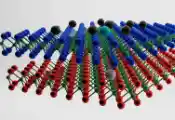CQT Scientists Achieve an Average Quantum Efficiency of 76.4% for the First Time Using a Single Photon Emitter Made From 2D Materials
Recently, an international team of researchers led by Singapore's CQT has come close with a single photon emitter made from two-dimensional materials and successfully suppressed non-radiative decay of localised exciton in these materials for the first time. In this study, researchers constructed the emitter using monolayer tungsten diselenide (WSe2), which is only one atom thick and generated excitons in excited states using lasers. As the exciton decays back to the ground state, it could randomly undergo either radiative or non-radiative decay. They minimized the probability of non-radiative decay using a 'charge depletion' technique to enhance the probability of radiative decay emitting photons, achieving an average of 76.4% quantum efficiency.







